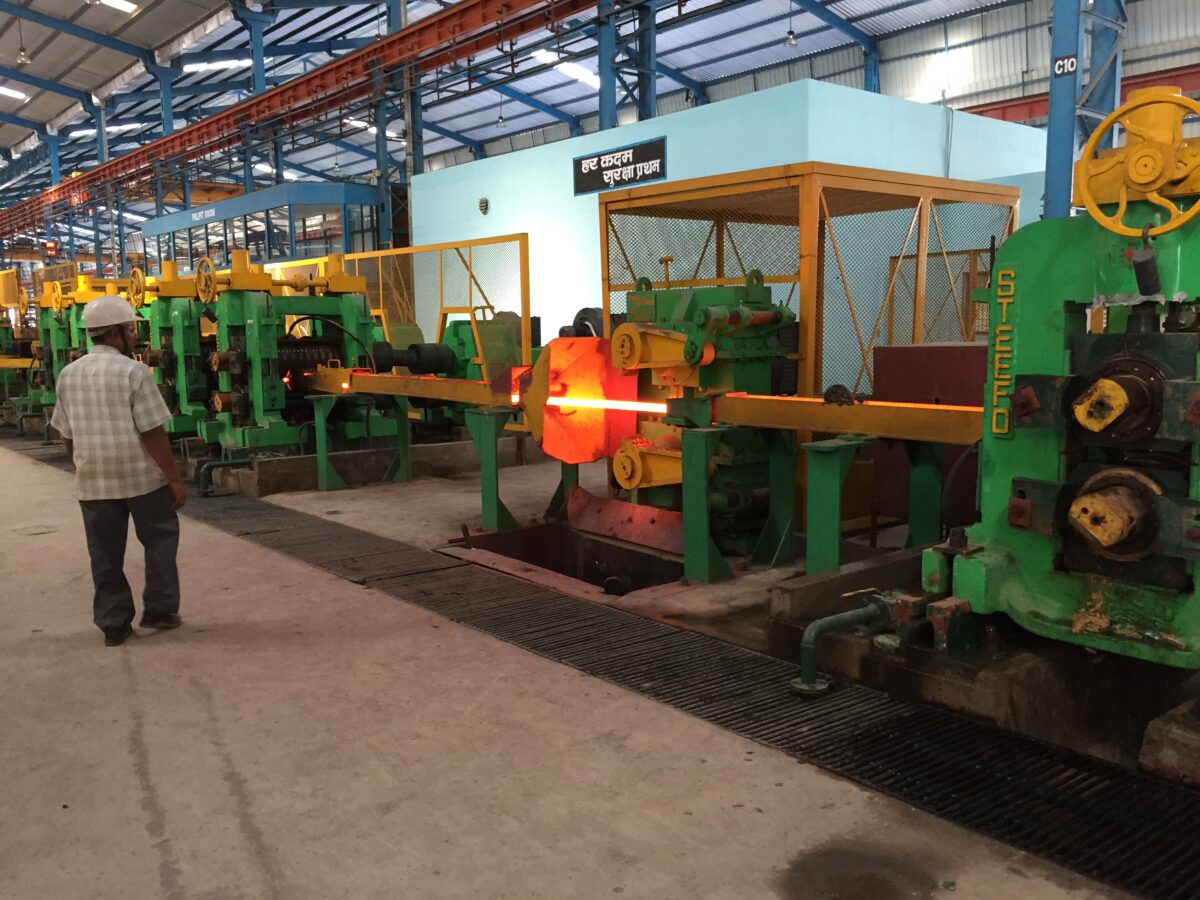The introduction of Thermo Mechanically Treated (TMT) steel bars began a new era in the Indian construction industry. Round plain steel reigned supreme until the sixties but was then ousted by TOR steel in the seventies and maintained dominance until the nineties came into the picture. In the late nineties, TMT steel and corrosion resistance steel made their grand debut, transforming the face of RCC structure by making them more resilient and long-lasting.
What Makes TMT Bars Stand Apart?
The term TMT bars has become the industry staple for constructing any structure, starting from bridges, flyovers, dams, hydel power plants, industrial structures, high-rise buildings, rapid transport systems, and more. TMT or Thermo Mechanically Treated bars uses Quenching and Tempering technology during production, obtaining their unique strength from that process. There is no chemical treatment involved in the manufacturing of TMT bars.
But what gives TMT bar the unique edge that allows them to conquer the construction industry?
Here are some of the attributes:
- TMT bars’ carbon content is limited to 0.2% to achieve weldability and suffers no strength loss.
- Ordinary electrodes have the ability to weld joints without any extra precaution.
- Due to their tough exterior and soft interiors, they have incredible ductility.
TMT bars tick all the three crucial boxes, strength, weldability and ductility, making them economical and safe for usage. A bonus is the corrosion resistance that TMT bars obtain since the cooling process avoids the formation of coarse carbide. The soft ferrite pearlite increases seismic loading. TMT bars are usually produced in Fe- 415, Fe – 500, Fe – 550, Fe 500D, Fe 550D grades with diameter starting from 8,10,12,16,20,25, 28, 32, 36, 40 MM, with a standard length anywhere from 5.5 -13 metres.
TMT Bars and the Indian Market
India’s iron and steel industry has come to occupy a dominant place in the country’s socio-economic development. India also ranks seventh as the largest crude steel-producing nation in the world. The Indian steel industry has gone through tumultuous business cycles, with several ups and downs. Today the industry is on the cusp of a significant change as it gears toward an expansion of ambitious standards.
The secondary producers of the Indian steel industry are joining forces with the main producers. The emergence of the secondary producers has initially been modest in the post-liberalized decade in the steel scene. Still, it steadily contributes to the development of the domestic steel and iron industry in aspects of capacity, production, spread, necessitation and commodity basket.
Steel production in India received a massive boost with the introduction of the Industrial Policy Resolution of 1956. This is where the public sector saw three SAIL plants being set up in the late 1950s and the fourth one in the early !970s. These plants, along with VISL, TISCO and IISCO(now a part of SAIL), were the sole producers of integrated steel till the eighties (RINL came into production in the early nineties)
There was a rising demand for the secondary sector for smaller-scale steel producers in the seventies. Specifically for those who had opted for induction furnace routes or the scrap-DRI based electric arc furnace, particularly for meeting local demands.
Semi-finished billets and ingots manufactured by this part led to the commissioning of considerable re-rolling units to transform semi-finished steel into rods and bars that can be utilised mainly in the construction industry.
The re-rolling part faced several market challenges, especially in high energy consumption and prices. However, there is a bright prospect of future growth, given the pace of construction and infrastructure activities. Experts estimate that the secondary producers in total crude steel production will increase from the current under -50% mark to at least 53%.
We are also seeing an increase of foreign steel plants setting up steel plants in India, gearing up to venture into their dream project as the steel industry of India prepares for a new era. An era that will include the dominance of the Indian iron and steel industry. The steady growth of the Indian economy because of the steel industry has also increased infrastructure from township complexes to roads, bridges, and civil construction projects, which guarantees the continuous demand for TMT bars.
Find the best TMT Bar Rolling Mill
We at the Steefo group understand the importance of TMT bars; therefore, we are the number one producer of TMT bar rolling mills. These TMT bar rolling mills are a part of Steefo’s DNA. We are the creators of ultra-modern, integrated automation solutions, developed to increase productivity and decrease manpower, guaranteeing a faster return on investment.
For queries related to TMT bar rolling mills, you can reach out to us by calling us at +919824076873 or write to us at marketing@thesteefogroup.com.
You can also check with our experts to understand TMT rolling mill project costs! We would be happy to help!



